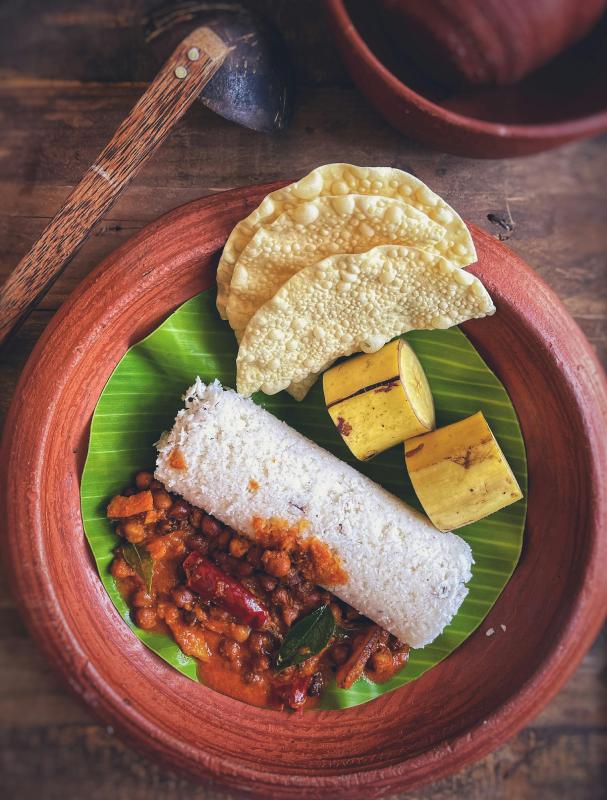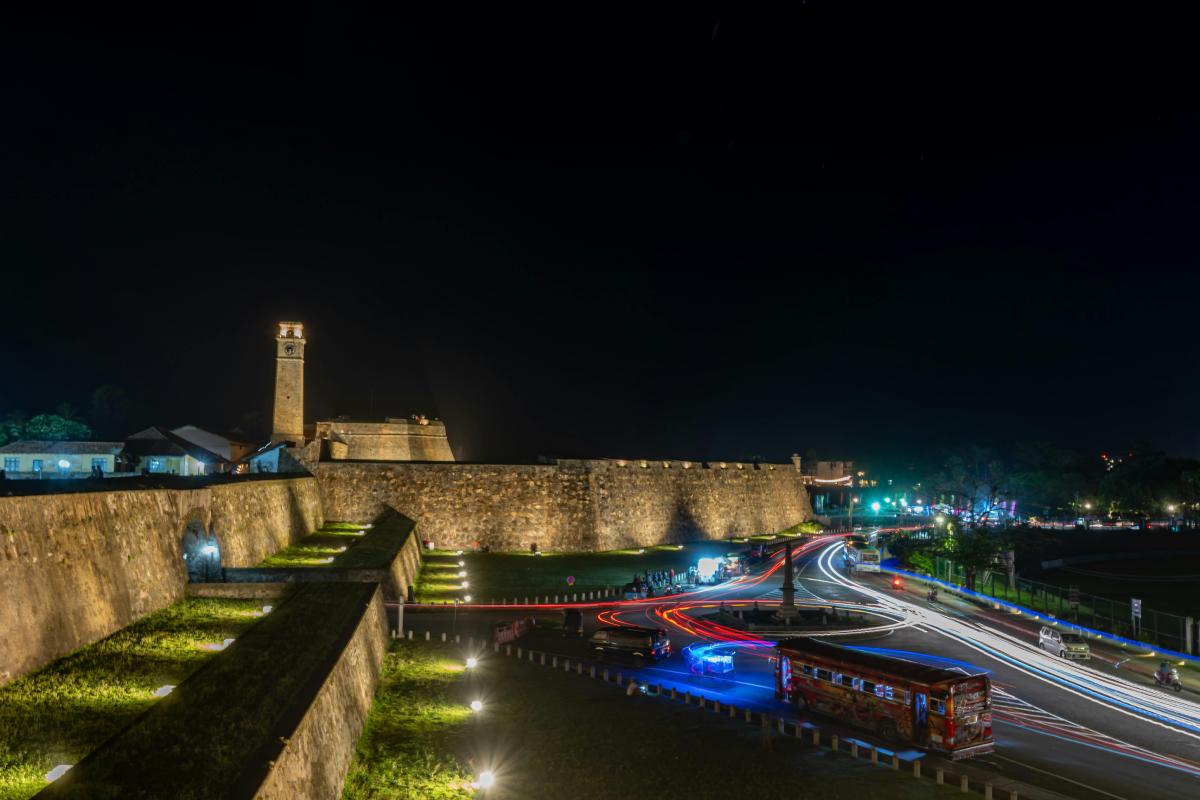Sri Lanka, the teardrop-shaped island nation in South Asia, boasts a culinary heritage as rich and diverse as its cultural landscape. Influenced by its colonial past, religious traditions, and abundant local ingredients, Sri Lankan cuisine offers a symphony of flavors that tantalize the taste buds with their complexity. From fiery curries to delicate desserts, the island’s food culture reflects its history of trade, migration, and agricultural abundance. top 10 sri lankan foods you must try.
What makes Sri Lankan cuisine distinct is its masterful use of spices, coconut in various forms, and the balance of sweet, sour, and spicy flavors. The food varies by region, with the coastal areas featuring more seafood dishes while the central highlands offer different specialties. If you’re planning a visit to this beautiful island or simply want to expand your culinary horizons, here are ten Sri Lankan dishes you absolutely must try.
1. Rice and Curry – top 10 sri lankan foods you must try
The cornerstone of Sri Lankan cuisine, rice and curry isn’t just a dish—it’s an experience. Unlike the single-curry meals you might find elsewhere, a traditional Sri Lankan rice and curry platter includes multiple small dishes served alongside rice, creating a feast of flavors and textures.
A typical rice and curry meal consists of steamed rice surrounded by at least 3-5 different curries. These might include a meat or fish preparation, dhal (lentil curry), and several vegetable dishes. What sets Sri Lankan curries apart is the liberal use of coconut milk and the distinctive flavor profile created by the “thuna paha” or three-five spice mix, typically including mustard seeds, cumin, coriander, fenugreek, and curry leaves.
Each component of the meal serves a purpose: some dishes provide heat, others offer tanginess, while some add creaminess or crunch. The combination creates a perfectly balanced meal that showcases the Sri Lankan approach to eating—variety in every bite. Don’t miss trying parippu (dhal curry), polos (young jackfruit curry), or the fiery fish ambul thiyal (sour fish curry) as part of your rice and curry experience.
2. Hoppers (Appa)
Hoppers, or “appa” in Sinhala, are Sri Lanka’s answer to pancakes, but with a distinctive bowl-like shape that makes them both visually appealing and functionally brilliant. Made from a fermented batter of rice flour, coconut milk, and a hint of sugar, hoppers are cooked in a small, rounded pan that gives them their characteristic shape—crispy and lacy around the edges while soft and spongy in the center.
The most popular variation is the egg hopper, where an egg is cracked into the center during cooking, creating a perfect pocket of protein. Plain hoppers serve as edible vessels for various curries and sambols, allowing you to scoop up flavorful accompaniments with pieces of the hopper itself.
Hoppers are typically enjoyed for breakfast or dinner and are often served with coconut sambol (a spicy condiment made with freshly scraped coconut, chili, lime, and onions) or seeni sambol (a sweet and spicy caramelized onion relish). The contrast between the slightly sweet hopper and the spicy accompaniments creates a delightful taste experience that’s distinctly Sri Lankan.
3. Kottu Roti
If there’s one dish that captures the vibrant street food culture of Sri Lanka, it’s kottu roti. This beloved comfort food is as much about the theatrical preparation as it is about the taste. Kottu (meaning “chopped”) consists of godamba roti (a type of flatbread) cut into strips and stir-fried with spices, vegetables, egg, and your choice of meat or seafood.
What makes kottu memorable is the rhythmic “tak-a-tak” sound of metal spatulas chopping and mixing the ingredients on a flat grill—a sound that echoes through Sri Lankan streets after dusk. The roti absorbs the flavors of spices and sauces, creating a medley of textures from the chewy bread to the crisp vegetables.
Kottu comes in many variations, including cheese kottu (a modern favorite among younger Sri Lankans), chicken kottu, beef kottu, and even seafood kottu in coastal areas. It’s typically served with a side of spicy curry sauce that adds moisture and an extra layer of flavor. For many, kottu represents the perfect late-night meal—filling, flavorful, and satisfying.
4. String Hoppers (Idiyappam)
String hoppers, known locally as idiyappam, are delicate nests of steamed rice flour noodles that serve as a staple in Sri Lankan households. Made by pressing rice flour dough through a special press onto small wicker mats before steaming, these intricate creations have a subtle flavor that pairs perfectly with curries and sambols.
Unlike regular hoppers, string hoppers have a consistent soft texture throughout and are usually eaten for breakfast or dinner. They’re particularly delicious when paired with kiri hodi (a mild coconut milk gravy infused with fenugreek), dhal curry, and coconut sambol.
String hoppers also showcase the historical connections between Sri Lanka and South India, where similar dishes exist, highlighting the cultural exchanges that have shaped the island’s cuisine over centuries. Their versatility makes them suitable for both everyday meals and special occasions.
5. Lamprais
A culinary legacy of the Dutch Burgher community in Sri Lanka, lamprais (or lump rice) is a complex dish that requires hours of preparation but rewards with incomparable flavor. At its core, lamprais consists of savory rice cooked in meat stock, accompanied by a special mixed meat curry (frikkadels), bereberegunje (a spicy eggplant preparation), seeni sambol, and a piece of ash plantain, all wrapped in a banana leaf and baked.
The banana leaf imparts a subtle aroma to the contents while holding in moisture, allowing the flavors to meld together during the baking process. Unwrapping a lamprais package is a sensory experience—the rush of aromatic steam, the visual feast of various components nestled together, and finally, the complex flavors that represent Sri Lanka’s multicultural heritage.
Authentic lamprais is increasingly hard to find, as it requires significant preparation time and multiple components. However, several establishments in Colombo and other major cities still prepare it the traditional way, making it a must-try for culinary enthusiasts seeking to understand Sri Lanka’s colonial culinary influences.
6. Pol Sambol (Coconut Relish)
Perhaps no condiment better represents Sri Lankan flavor sensibilities than pol sambol—a fiery coconut relish that accompanies countless meals across the island. Made with freshly grated coconut, red chili powder, lime juice, onions, and Maldive fish (a dried, cured tuna that adds umami depth), pol sambol delivers a perfect balance of heat, tanginess, and richness.
The beauty of pol sambol lies in its versatility. It can transform a simple plate of rice into a satisfying meal, add zing to bread or hoppers, or serve as a palate-cleansing side dish with heavier curries. Vegetarians can request versions without Maldive fish, which maintain most of the classic flavor profile.
Making good pol sambol is considered an art in Sri Lankan households, with each family having their own specific proportions and techniques. The ingredients are typically mixed by hand, allowing the lime juice and chili to slightly “cook” the coconut and onions, melding the flavors together into a cohesive whole that’s greater than the sum of its parts.
7. Fish Ambul Thiyal (Sour Fish Curry)
From the southern coastal regions comes fish ambul thiyal, a dry curry preparation that showcases Sri Lanka’s mastery of preserving and flavoring seafood. This dish features firm fish (traditionally tuna) cut into cubes and simmered with a unique blend of ingredients, including goraka (a fruit that gives the dish its sour flavor and acts as a preservative), black pepper, cinnamon, garlic, turmeric, and curry leaves.
The cooking process reduces the sauce completely, allowing the fish to absorb all the flavors and creating a dish that’s intensely sour, spicy, and deeply satisfying. Originally developed as a preservation method in the days before refrigeration, ambul thiyal has remained popular for its distinctive taste profile that can’t be found elsewhere.
The dish pairs perfectly with rice and milder accompaniments that balance its intensity. Its complex flavor and relative dryness (compared to other curries) make it an excellent introduction to the more unique aspects of Sri Lankan seafood preparation.
8. Watalappan
No culinary journey through Sri Lanka would be complete without sampling watalappan, a silky coconut custard dessert introduced by the Malay community. Made with jaggery (palm sugar), coconut milk, eggs, and aromatic spices like cardamom, clove, and nutmeg, watalappan is steamed until it reaches a perfect consistency—firm enough to hold its shape but soft enough to melt in your mouth.
Often garnished with cashew nuts and served chilled, this dessert exemplifies how Sri Lankan cuisine has absorbed influences from various cultures while adapting them to local ingredients and tastes. The use of jaggery instead of refined sugar gives watalappan a complex caramel-like sweetness that pairs beautifully with the richness of coconut milk.
Traditionally associated with Muslim celebrations like Eid, watalappan has become a beloved dessert across all communities in Sri Lanka. You’ll find it in restaurants throughout the country, though homemade versions often have the perfect balance of sweetness and spice that makes this dessert truly special.
9. Pittu
Pittu represents Sri Lankan ingenuity in creating varied textures from simple ingredients. This cylindrical steamed cake consists of layers of ground rice flour and fresh coconut, resulting in a dish that’s simultaneously light, crumbly, and moist. Traditionally steamed in bamboo tubes or coconut shells, pittu has a distinct presentation that’s as appealing as its subtle flavor.
Like many Sri Lankan staples, pittu serves as a canvas for more flavorful accompaniments. It pairs wonderfully with spicy curries, particularly kiri hodi (coconut milk gravy) or fish curry. In some regions, pittu is enjoyed with jaggery and banana as a sweet option, showcasing its versatility.
What makes pittu special is its perfect moisture level—neither too dry nor too soggy—achieved through the careful layering of coconut and rice flour before steaming. This attention to texture is characteristic of Sri Lankan cuisine, where mouthfeel is considered as important as flavor in creating a satisfying eating experience.
10. Crab Curry
For seafood lovers, Sri Lankan crab curry represents the pinnacle of the island’s coastal cuisine. Using lagoon crabs prized for their sweet meat, this dish combines the crustaceans with a rich, spiced coconut curry sauce that’s simultaneously fiery, tangy, and fragrant. The curry typically includes pandan leaves, curry leaves, fenugreek, and a generous amount of red chili, creating a sauce worthy of being sopped up with bread or rice after the crab is finished.
The preparation requires effort—cracking and cleaning the crabs, creating a balanced spice mix, and simmering everything to perfection—but the result is a dish that many consider worth traveling to Sri Lanka specifically to try. The best crab curries can be found in coastal areas, particularly in Colombo, Negombo, and Jaffna, where fresh seafood is delivered daily.
Eating crab curry is a hands-on, somewhat messy affair that involves cracking shells and extracting tender meat, but the flavor reward makes the effort worthwhile. The dish exemplifies Sri Lanka’s ability to take incredible natural ingredients and enhance them through skilled spice work without overwhelming their inherent qualities.
Beyond the Top Ten
While these ten dishes offer a comprehensive introduction to Sri Lankan cuisine, they merely scratch the surface of what this culinary powerhouse has to offer. Regional specialties like Jaffna crab curry, puttu (steamed cylinders of ground rice layered with coconut), and bibikkan (a dense, sweet coconut cake) could easily warrant their own spots on an extended list.
Sri Lankan food culture also includes a vibrant array of short eats (snacks) like fish cutlets, vegetable rolls, and patties that make for perfect tea-time accompaniments. The country’s drink culture, centered around world-famous Ceylon tea, adds another dimension to its gastronomic identity.
For travelers with adventurous palates, Sri Lanka offers a culinary journey that rivals its stunning landscapes and rich cultural heritage. Whether you’re enjoying a humble hopper breakfast by the roadside or indulging in a multi-dish feast at a high-end restaurant, the depth of flavor and care put into Sri Lankan cooking leaves a lasting impression that will have you planning your return trip before you’ve even left the island.
The beauty of Sri Lankan cuisine lies not just in its bold flavors and diverse offerings, but in how it brings people together—around family tables, at roadside stalls, and in celebratory feasts that mark important occasions. Through food, visitors can gain insight into the warmth, generosity, and cultural richness that define this remarkable island nation.


